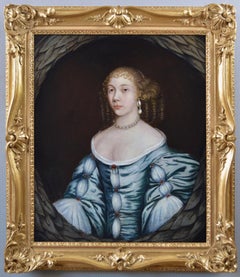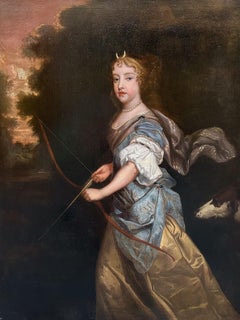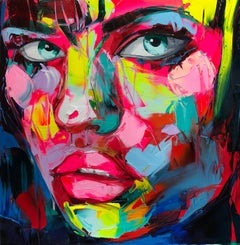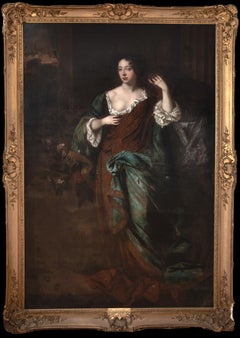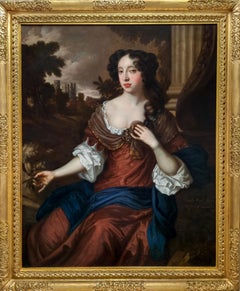Studio of Sir Peter Lely Art
Sir Peter Lely was a painter of Dutch origin whose career was nearly all spent in England, where he became the dominant portrait painter to the court. Lely was born as Pieter van der Faes to Dutch parents in Soest in Westphalia. He studied painting in Haarlem, where he may have been apprenticed to Pieter de Grebber and became a master of the Guild of Saint Luke in Haarlem in 1637. Lely is reputed to have adopted his surname from a heraldic “Lely” on the gable of the house where his father was born in The Hague. After arriving in London around 1643, his early English paintings, mainly mythological or religious scenes or portraits set in a pastoral landscape, show influences from Anthony van Dyck and the Dutch baroque. Lely’s portraits were very well received and he succeeded van Dyck (who had died in 1641) as the most fashionable portrait artist in England. He became a freeman of the Painter-Stainers’ Company in 1647 and was portrait artist to Charles I. His talent ensure that his career was not interrupted by Charles’ execution and he was appointed as Charles II’s Principle Painter in Ordinary in 1661, with a stipend of £200 per year. Lely became a naturalised English subject in 1662 and his demand and workshop were prolific.
17th Century Studio of Sir Peter Lely Art
Canvas, Oil
17th Century Old Masters Studio of Sir Peter Lely Art
Canvas, Oil
21st Century and Contemporary Contemporary Studio of Sir Peter Lely Art
Canvas, Oil
21st Century and Contemporary Contemporary Studio of Sir Peter Lely Art
Canvas, Oil
1930s Modern Studio of Sir Peter Lely Art
Oil, Canvas
18th Century Old Masters Studio of Sir Peter Lely Art
Canvas, Oil
17th Century Old Masters Studio of Sir Peter Lely Art
Canvas, Oil
Early 20th Century Impressionist Studio of Sir Peter Lely Art
Canvas, Oil
Venice Landscape Italian Oil on Canvas Painting in Gilt Wood Frame, Belle Epoque, Early 20th Century
Mid-20th Century Studio of Sir Peter Lely Art
Canvas, Oil, Laid Paper
17th Century Old Masters Studio of Sir Peter Lely Art
Canvas, Oil
17th Century Old Masters Studio of Sir Peter Lely Art
Canvas, Oil
17th Century Old Masters Studio of Sir Peter Lely Art
Oil, Canvas
Mid-17th Century Old Masters Studio of Sir Peter Lely Art
Canvas, Oil
Early 17th Century Old Masters Studio of Sir Peter Lely Art
Oil, Canvas
17th Century Studio of Sir Peter Lely Art
Canvas, Oil
17th Century Old Masters Studio of Sir Peter Lely Art
Canvas, Oil
17th Century Old Masters Studio of Sir Peter Lely Art
Canvas, Oil
17th Century Old Masters Studio of Sir Peter Lely Art
Canvas, Oil
17th Century Old Masters Studio of Sir Peter Lely Art
Canvas, Oil
17th Century Old Masters Studio of Sir Peter Lely Art
Canvas, Oil
